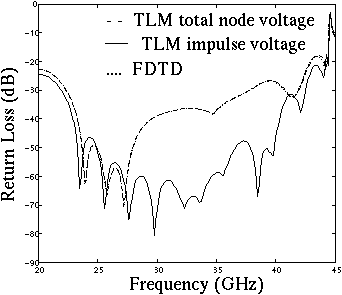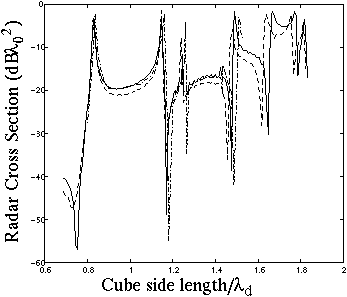
Channabasappa Eswarappa and Wolfgang J.R. Hoefer
A comparative performance study of Higdon's absorbing boundary conditions (ABCs) in TLM and FDTD under identical conditions (such as same time step, excitation, etc.) has been done. It has been observed that an ABC applied directly to the TLM voltage impulses absorbs better than the same ABC applied to the TLM total node voltages or FDTD field values. It has also been found that in a FDTD analysis, the damping factors have a greater influence on the stability than the way in which the absorbing boundary operators are discretized, while in a TLM analysis the opposite is true. Also, in a TLM analysis, the absorbing boundaries can be placed closer to a scatterer than in a FDTD analysis without affecting the accuracy. These observations have been demonstrated by applying them to examples such as waveguides and dielectric cubes.
Further details can be found in
C. Eswarappa and W.J.R. Hoefer, "A comparative performance study of absorbing boundary conditions in TLM and FDTD", 12th Annual Review of Progress in Applied Computational Electromagnetics (ACES) 1996 Digest, pp. 302-309, March 18-22, 1996, Monterey, CA.

Return loss of Higdon's second-order absorbing boundary condition in a WR28 waveguide (a = 0.5, b = 0.5, theta_1 = 30 deg, theta_2 = 45 deg, epsilon_1 = 0.0, epsilon_2 = 0.0)

RCS computed with TLM, FDTD and comparison with measurements (solid - TLM with 20 delta_l white space, dashed - FDTD with 30 delta_l white space, dot-dash - Measurements [Trueman, et al])